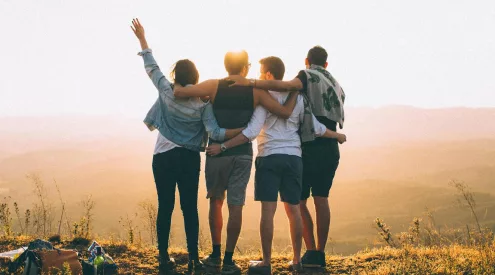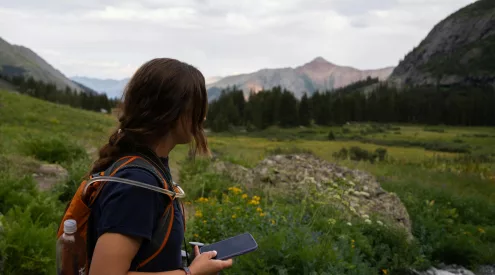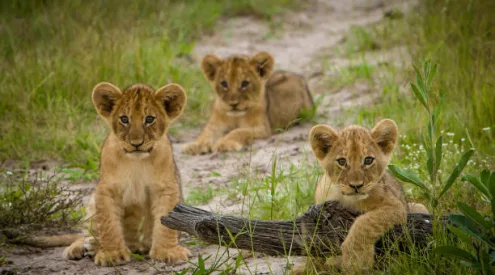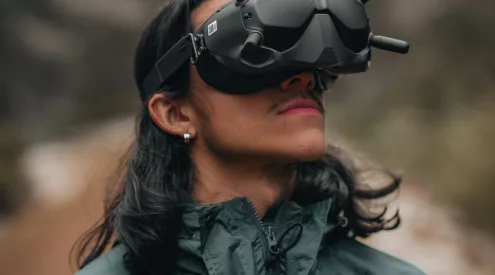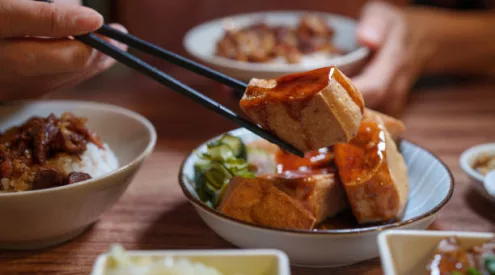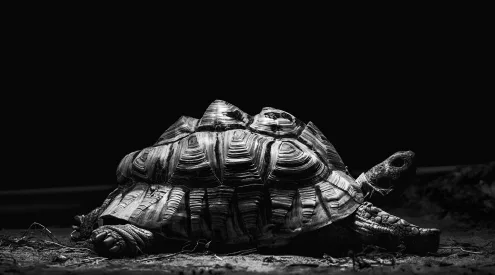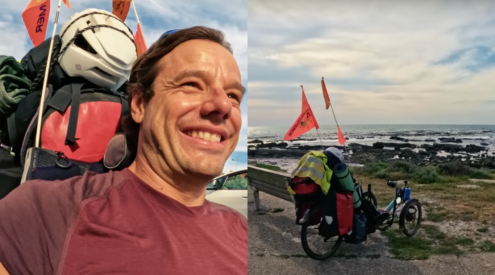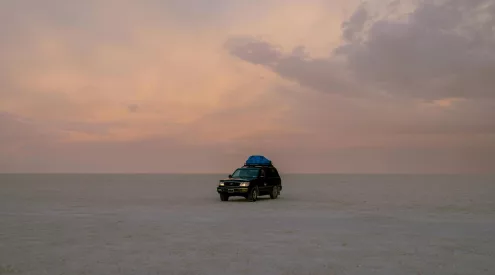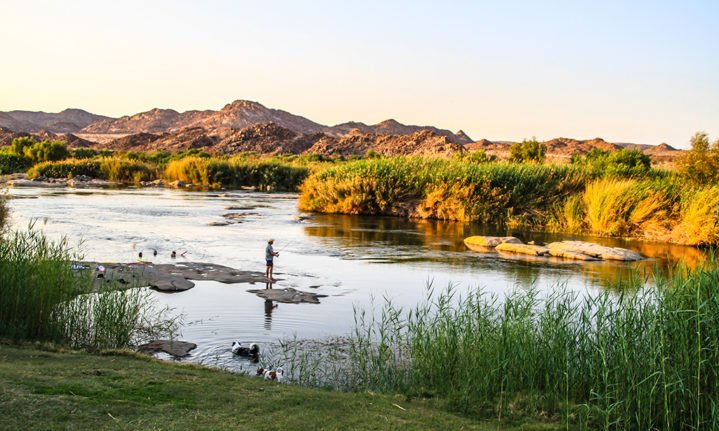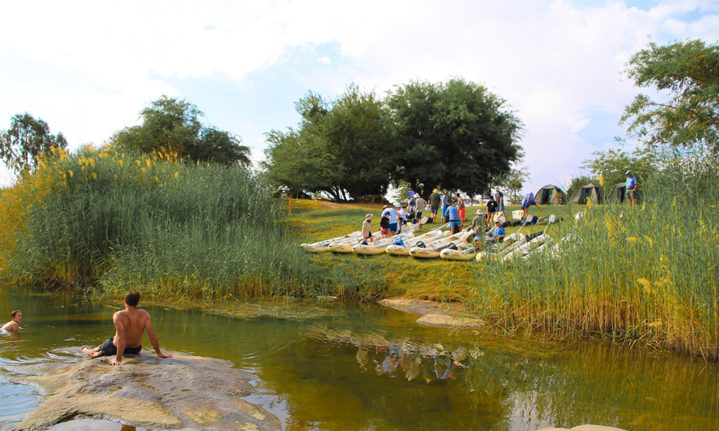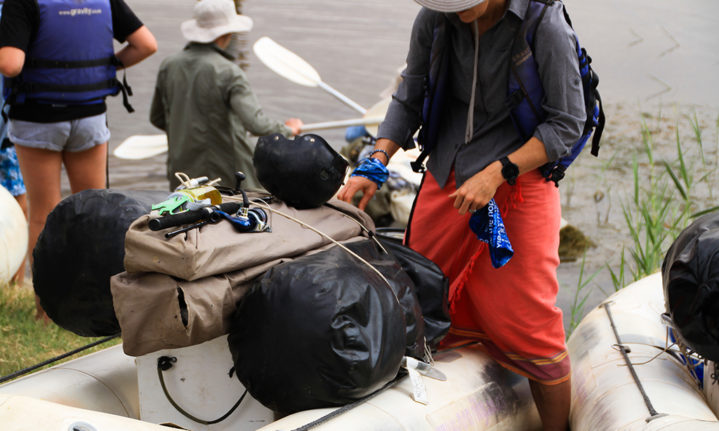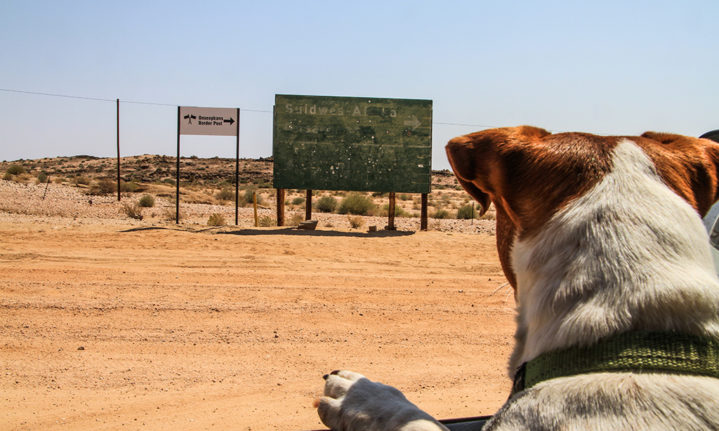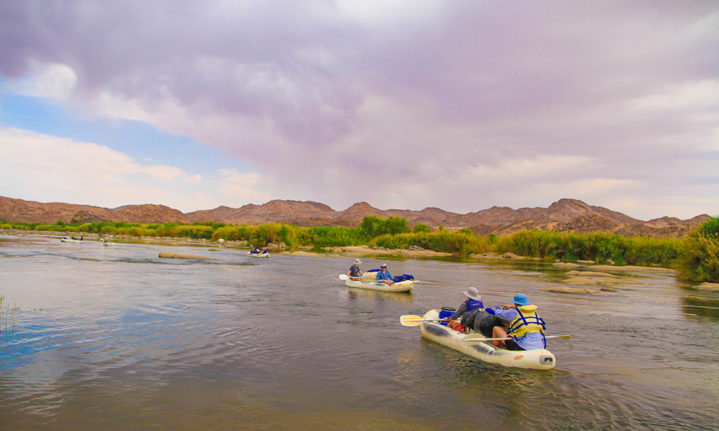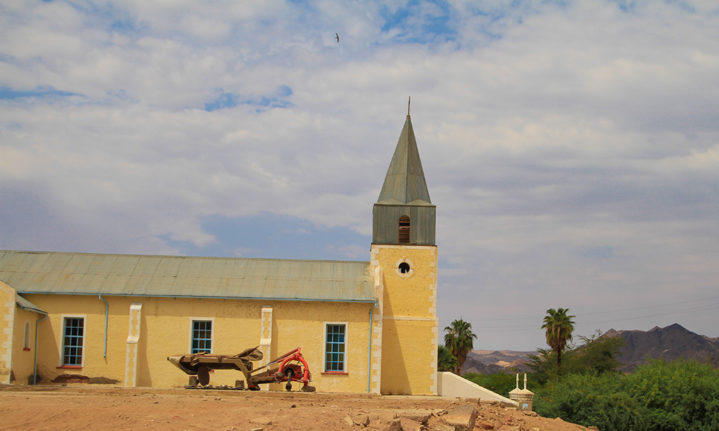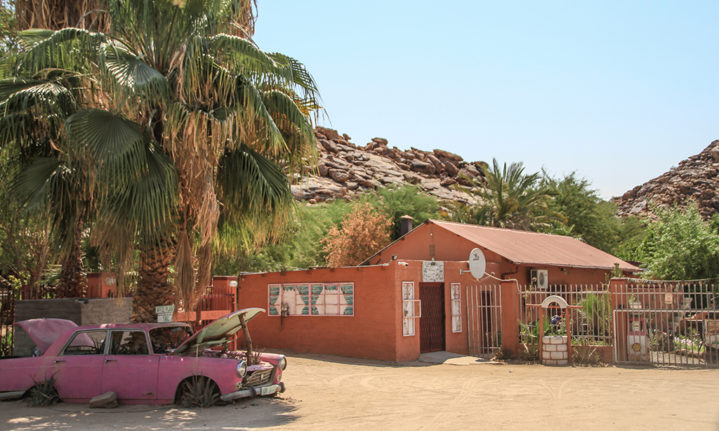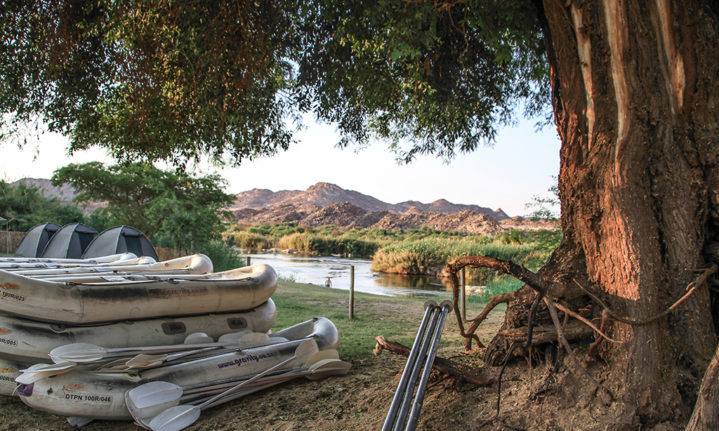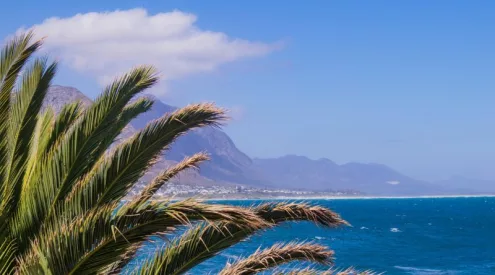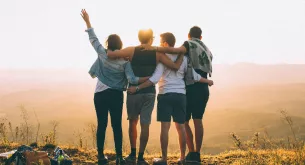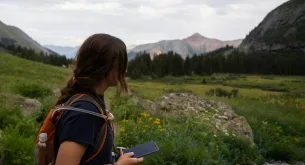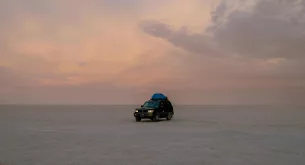Onseepkans might be the most underrated border crossing into southern Namibia. Its ecotourism attractions beg discovering, and not only by the 4×4 community.
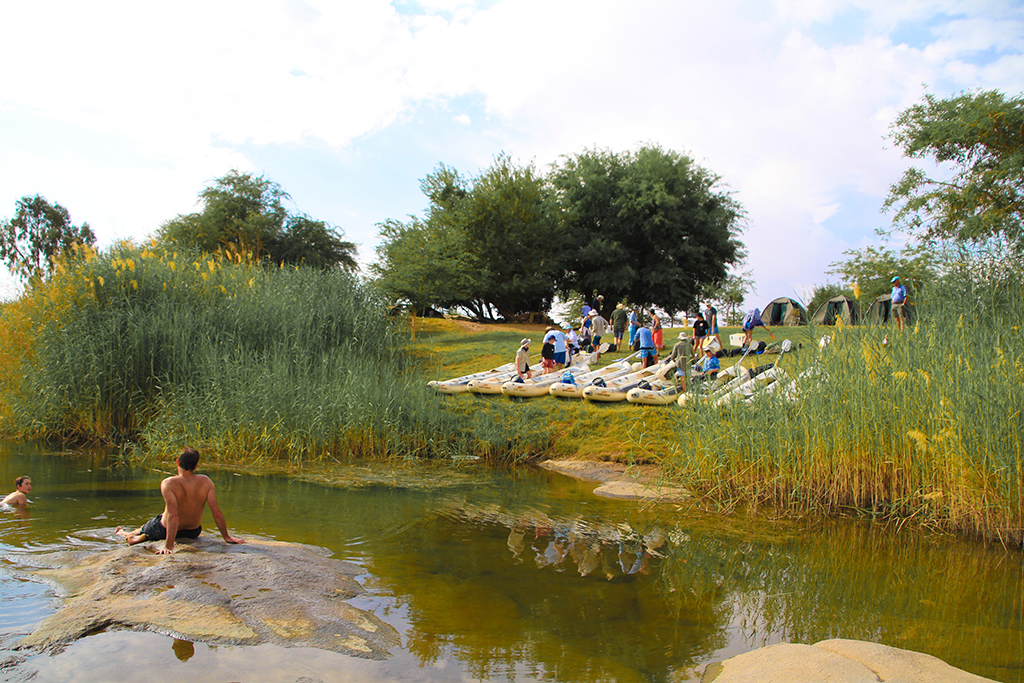
Don’t be fooled by its tranquil appearance, there’s action aplenty in this fast-flowing stretch of the Orange River.
Words & Photos: Romi Boom
Undiscovered. Uncharted. No crowds. These are the catchwords right now, and they’re being tagged everywhere.
Just about everyone I speak to has heard of Pella, the palm-studded oasis near the Orange River, a green mirage among the myriad browns of the Northern Cape. Most folk make the association with dates, and a few history boffins refer to the erstwhile mission station. But hardly anyone has heard of Onseepkans, which is – as the crow flies – just a short distance upstream along the Orange.
The sleepy border post at Onseepkans-Velloorsdrif is a stress-free gateway to Keetmanshoop in Namibia but, if you’re going to tackle the back roads, why not insert a few days’ pause into your journey? You’ll discover one of the most remote parts of the country, akin to the Richtersveld in its isolation… but way more accessible.
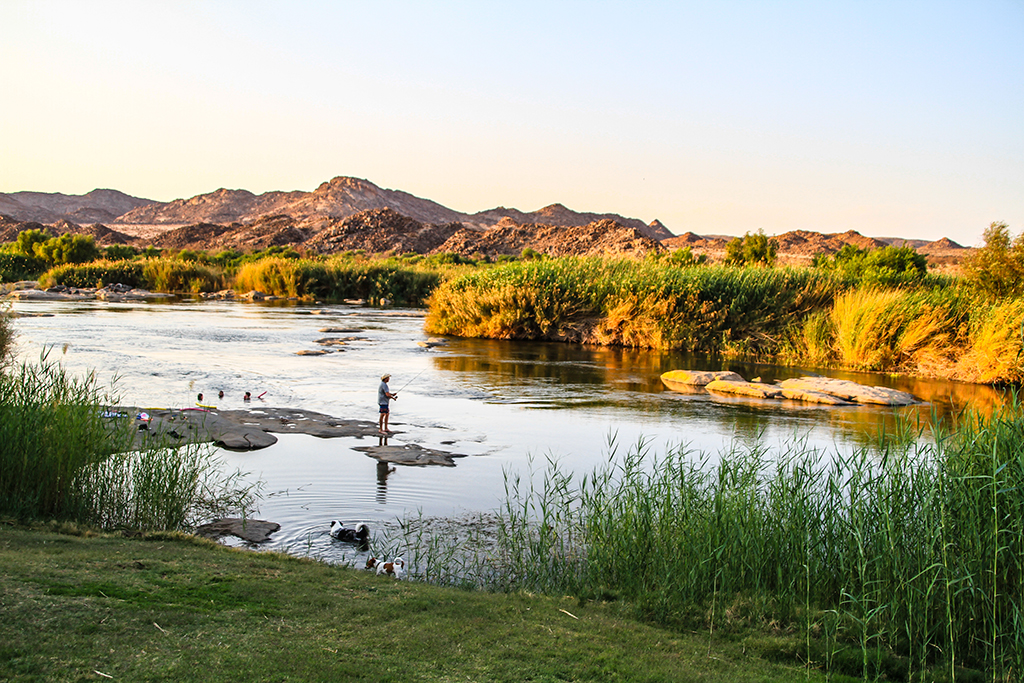
From the campsite it’s a short swim to the middle of the river, where technically you’ll be in Namibian waters.
The profile of the Bushmanland landscape is inhospitable, stark, drought-stricken. Look carefully, though, and you’ll be charmed by the beauty of granite outcrops and quiver trees. Driving between Pofadder and Onseepkans, watch out for the farm Coboob; it’s home to a quiver tree forest that is said to be one of the largest of its type.
Red Rock River Camp overlooks the bridge across the Orange River. It’s a convenient stopover if you’re going to be crossing the border but it is also a destination in its own right, known mostly for river rafting and angling, as well as a wedding venue for the ecologically aware. A rustic campsite sits atop the riverbank, with expansive green lawns, lots of shade, power points, private braai facilities as well as a boma for groups. If you don’t have your own gear, no problem. Dome canvas tents, equipped with stretchers, can be booked. In the late afternoon, a donkey boiler heats up water for hot showers.
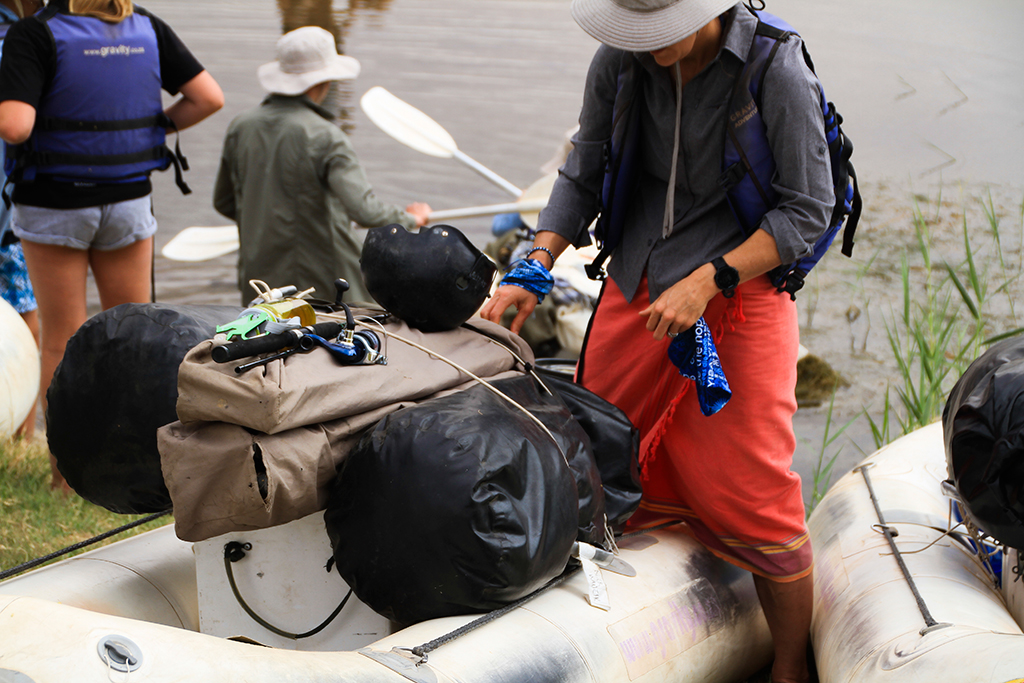
River rafters on a multi-day trip tie their dry bags securely.
Soothed by the babbles and gurgles of fast-moving channels, we chill for a few days, dressed in nothing but swimsuits and kikois. The current is strong and it is a challenge to swim to one of the many islands in the river. Our Australian shepherd dog, Panda, is a water baby and soon figures out how to steer towards the riverbank. Lazy lizards like our Jack Russell, Obi, however, sun themselves on the flat rocks and only dip in when the heat is sizzling.
Some folk cast a line – strictly catch and release – their reward yellowfish and tilapia.
Full marks if you brought along a pool noodle; kids of all ages squeal with joy as they drift a short section downstream, scramble out, and start all over again.
Rafting is popular throughout the year, the riverside campsite being the entry point to the Ritchie Falls, the second highest waterfall on the Orange River after Augrabies. Reached by paddling through a remote, untouched wilderness, the Ritchie Falls are only accessible by rafting from Onseepkans, or after two days’ hiking.
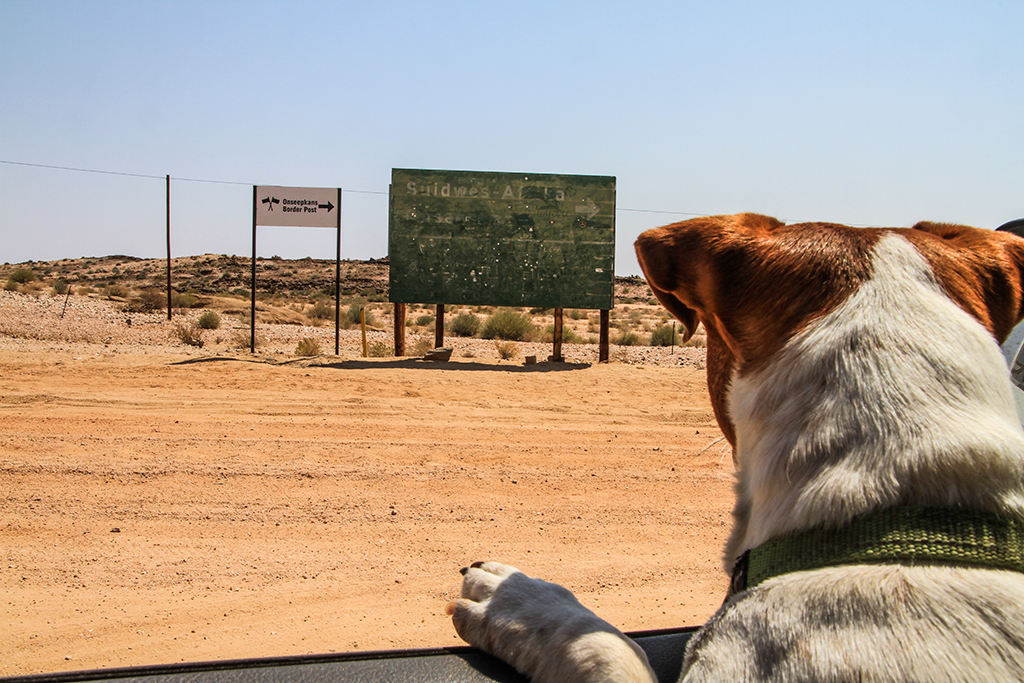
Look out for the antiquated signboard that points the way to Suidwes-Afrika.
Guided multi-day and even one-day trips in two-person inflatable ‘crocs’ can be tailor-made, and transport is provided back to the campsite. In summer, when the rapids are a magnet for adrenaline junkies, the whitewater is something to behold.
Birders have plenty to tick. At twilight, we watch a goliath heron checking out the menu in the river, balanced on one leg, patiently biding its time. During the day rosy-faced lovebirds chirp constantly – what huge personalities they have. These little parrots are endemic to this arid region and flit about the campsite’s giant thorn trees.
If you’re keen to explore the surroundings, it’s a short drive to the Onseepkans hamlet, one of several small communities on both sides of the Orange River (about 2 000 people live in the area, most of them involved in agriculture). The prolific Afrikaans writer and poet George Weideman lived here once on an irrigation plot, and some of his most haunting lines evoke the heat and hellishness of the area.
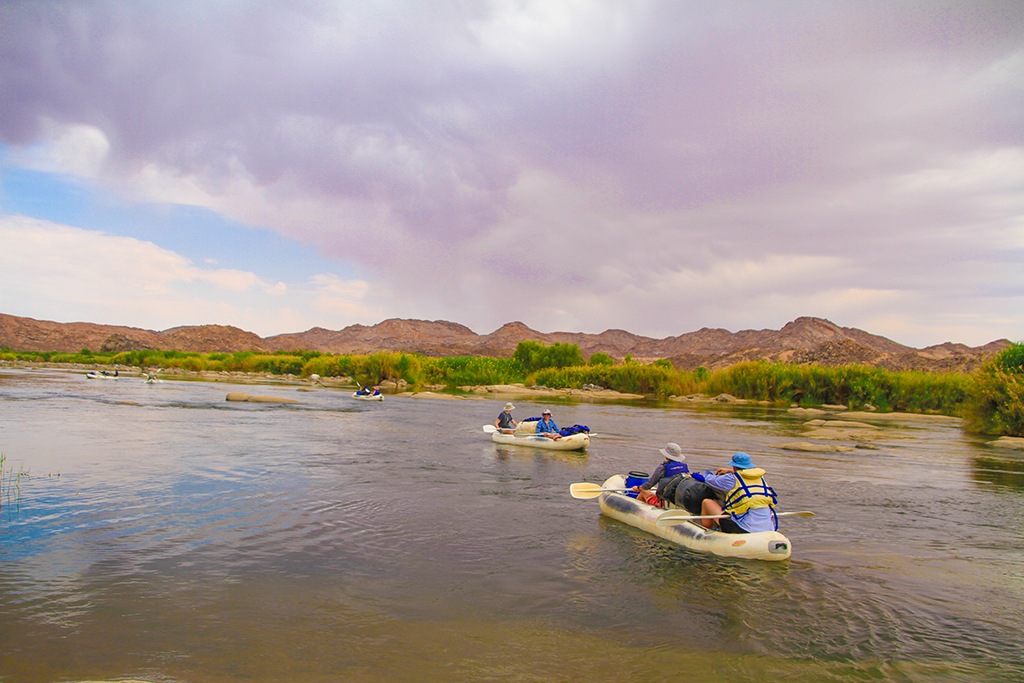
From Onseepkans, explore one of the Orange River’s most pristine stretches.
Today there is a liquor store, a grocer, a butchery, a church ruin and a clinic. The Roman Catholic mission church is one of two sights, the other being the 10km irrigation canal that was built by hand in 1916 by a farmer called Japie Lutz. Modern irrigation today is key to the extensive plantings of export table grapes that appear to rival those at Kakamas.
Back at camp for sundowners, the macho mountains on the far side of the river are all dressed up in girly pinks and purples. Rose quartz hues set a romantic scene, a prelude to night time’s bejewelled sky, dark and unpolluted. Whoever would have thought that austerity could beget such wealth?
What’s in a name?
The name Onseepkans may have originated from a combination of three Nama words: ‘tconsiep’ (an elbow projecting into the river), ‘nias’(a rocky surface), and ‘tcaans’ (thorntrees), or a derivative of a Nama word that means ‘watering place for cattle’. Translated literally from Afrikaans, it means ‘(an) opportunity to rinse (off) soap’.
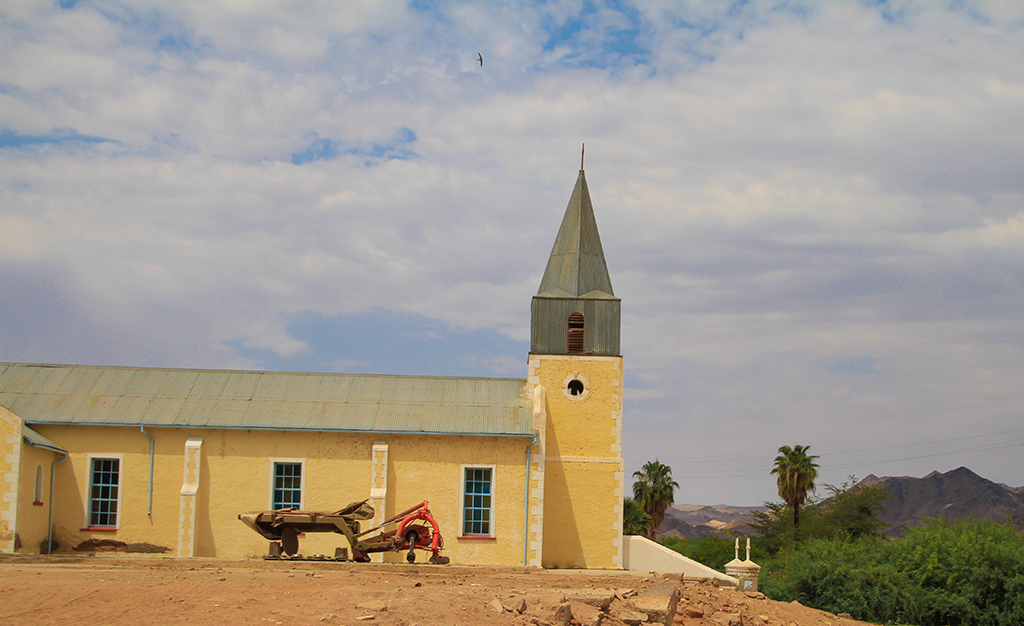
The Roman Catholic Mission Church (c.1927) towers over the remote farming town.
Trip Planner
Getting there
To reach the settlement, travel 49km on gravel along the R358 from Pofadder. Alternatively, along a much better road, Onseepkans can be accessed from Kakamas by taking the N14 for 76km and then turning right on to a minor road that is tarred initially for about 10km and then is gravel for 45km.
Do look out for the road sign that points the way to Suidwes-Afrika. It is a relic!
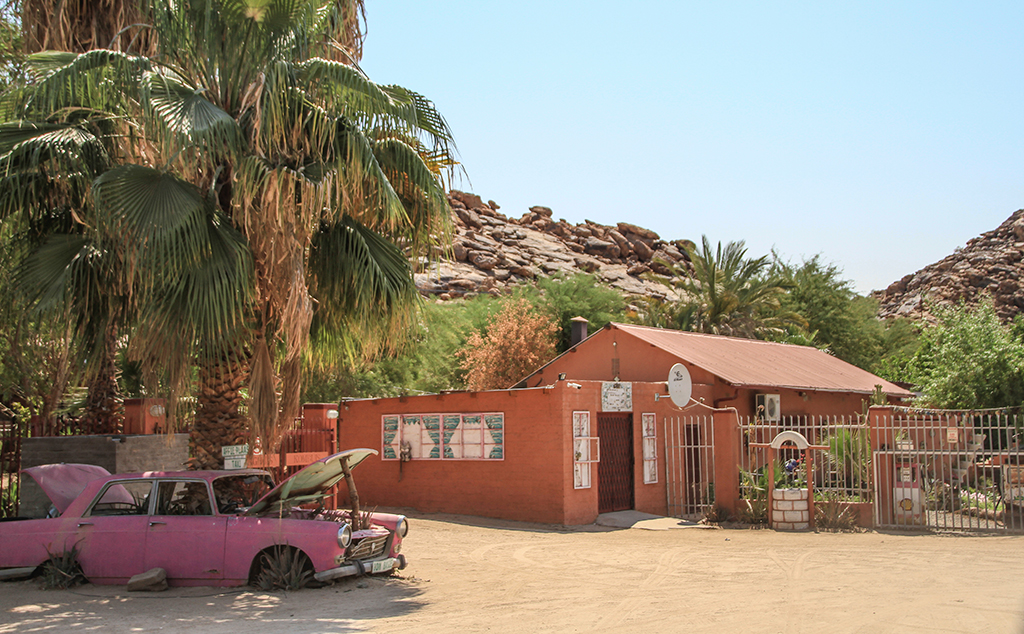
Time stands still in Onseepkans. Best to take along whatever you need.
Stay Here
Red Rock River Camp costs R200 pp pn. Contact Adelaine. 083 660 7798, [email protected]
Oranjedal Guest Farm is 2.2km from the border post on the farm Rooipad. Four self-catering units each sleep four people. R450 pp. 064 905 9167, [email protected]
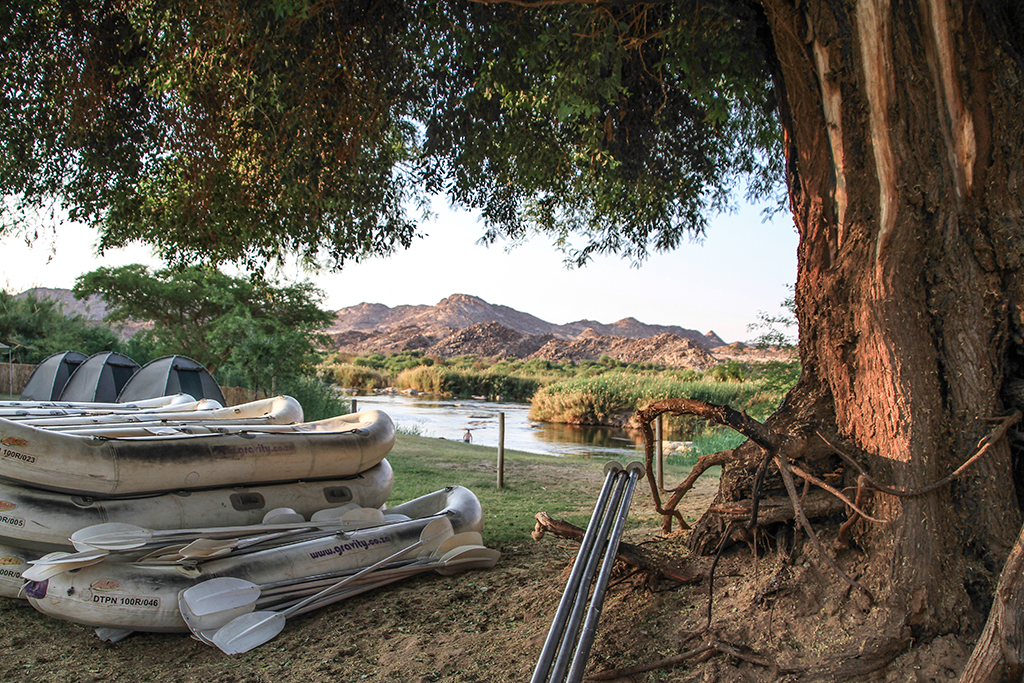
Red Rock River Camp
Do this
For multi-day rafting trips along the Orange River, Gravity Adventures is your go to. For adults, four-day trips are R6 800, R5 750 for kids; three days are R6 550 for adults and R5 600 for children. 021 683 3698, gravity.co.za
ALSO READ

